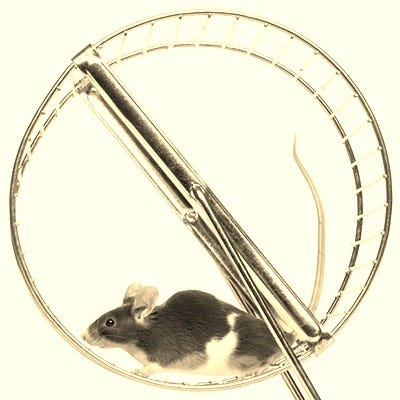Finishing the Hat: Collected Lyrics (1954-1981) with Attendant Comments, Principles, Heresies, Grudges, Whines and Anecdotes by Stephen Sondheim
(with help from
Let’s Do It: The Birth of Pop Music – A History by Bob Stanley)
People looking to disparage modern literature will often complain that it has changed from an art to a craft. Gone are the days, they say, when writers considered themselves attuned to some outside force, mere channels for the muse, the antennae of the race. Now our novelists and poets consider themselves dutiful little craftsmen, attending Iowa or Columbia or NYU to learn from masters of the trade and going into the world to hammer out finely wrought but uninspired work, losing the wild vitality that animated the romantics and modernists.

Though this is a vast oversimplification, a half-truth at best, a half-truth is still a some-truth. So it is curious to consider that as literature underwent this shift, popular music was transforming in the opposite direction. While modern pop music is the product of many artisans, these days it’s hard to shake off appraising it with a Romantic sensibility; as the uncontaminated expression of one artistic soul. And this is true on all levels, from bedroom producers and coffeehouse strummers to Taylor Swift, whose records involve dozens of producers, co-writers, and musicians, but who is read by her fans on a diaristic, personal level, as though she were Sylvia Plath.
But there was a time, from around the invention of the Gramophone to the late 1950s, when popular music was understood as crafted, by people like Jerome Kern, Irving Berlin, George and Ira Gershwin, and Cole Porter, who would, figuratively if not literally, clock in to an office, roll up their sleeves, and get to work producing songs, most of which were written for musical theatre but which quickly passed into culture via other recordings, often before the shows even closed. This meant that for the first fifty years of pop’s existence, songs were divorced from singers, they were uniquely free-floating and open to interpretation. Hear “Creep” and you think Radiohead, hear “Yesterday” and you think The Beatles, hear “All the Things You Are” and you think – who? Maybe Frank Sinatra, maybe Ella Fitzgerald, maybe John Coltrane, but almost certainly not the forgotten 1939 musical
Very Warm for May.
Which brings me to
Finishing the Hat, the annotated lyrics, partial autobiography, and opinionated consideration of his predecessors by Stephen Sondheim, the most important theatrical composer and lyricist of the twentieth century’s second half. Like Keith Johnstone’s
Impro, which I’ve also
written about in these pages,
Finishing the Hat is a book seemingly concerning a narrow and oft-maligned branch of theatrical practice that will actually be useful, even revelatory, to anyone involved in any creative pursuit at all. Sondheim says it himself in the indispensable introduction:
The explication of any craft, when articulated by an experienced practitioner, can be not only intriguing but also valuable, no matter what particularity the reader may be attracted to. For example, I don't cook, nor do I want to, but I read cooking columns with intense and explicit interest. The technical details echo those which challenge a songwriter: timing, balance, form, surface versus substance, and all the rest of it. They resonate for me even though I have no desire to braise, parboil or sauté. Similarly, I hope, the specific techniques of lyric-writing will enlighten the cook who reads these pages. Choices, decisions and mistakes in every attempt to make something that wasn't there before are essentially the same, and exploring one set of them, I like to believe, may cast light on another.
It would have been easy to dash off a preface to this book, let the editors arrange the lyrics as they saw fit, and call it a day, but Sondheim, ever the perfectionist, cannot abide the thought. Each set of lyrics is given a long introduction describing the genesis of the production they were written for and then intensely annotated, with ruthless honesty in pointing out what he considers his mistakes, failures, and sloppiness. And interspersed throughout are short essays commentating on his predecessors, the men and women who created the form and canon of American song.
So what is the task of the lyricist, according to Sondheim? It is not the same as the task of the poet, who depends on density and evocation rather than clarity and catchiness (he scorns lyrics by poets like W.H. Auden and Langston Hughes who ventured into theatre, saying they “convey the aura of a royal visit”). Mostly, it’s to get out of your own way. The lyricist must serve both the music and the performer by being easy to sing, comprehensible, and not too overwrought, all while managing to convey the emotional tenor of the song. Despite his work’s reputation for being musically complex and somewhat chilly, on the page Sondheim’s lyrics read as quite simple and straightforward, without a word out of place. And contrary to what the Romantic might assume, he is adamant that attention to craft and detail helps to highlight the emotion of the song rather than smother it, as he writes in his extended defense of the importance of true rhyme (as opposed to near rhyme or slant rhyme).
In fact, pop listeners are suspicious of perfect rhymes, associating neatness with a stifling traditionalism and sloppy rhyming with emotional directness and the defiance of restrictions. [...]The notion that good rhymes and the expression of emotion are contradictory qualities, that neatness equals lifelessness is, to borrow a disapproving phrase from my old counterpoint text, "the refuge of the destitute." Claiming that true rhyme is the enemy of substance is the sustaining excuse of lyricists who are unable to rhyme well with any consistency.
"If the craft gets in the way of the feelings, then I'll take the feelings any day." The point which [the unnamed pop star he is criticizing] overlooks is that the craft is supposed to serve the feeling. A good lyric should not only have something to say but a way of saying it as clearly and forcefully as possible—and that involves rhyming cleanly. A perfect rhyme can make a mediocre line bright and a good one brilliant. A near rhyme only dampens the impact.
Then there’s trying to be too clever, and showing off – a common sin. Here’s the rapture of a critic praising the work of Jerome Kern and his partners Guy Bolton and P.G. Wodehouse (yes, that P.G. Wodehouse), as cited in Bob Stanley’s book
Let’s Do It.
Nobody knows what on earth they’ve been bitten by
All I can say is I mean to get lit an’ buy
Orchestra seats for the next one that’s written by
Bolton and Wodehouse and Kern
Not to dig up this long-dead man’s tossed-off verse just to bury it, but recite it and you can see that, despite the superficial cleverness of the rhyme, the third line causes the tongue to trip over itself, the glide from “orchestra” to “seats” is difficult, not to mention the dreadful “next one that’s”. Now compare Cole Porter in the bridge of “Anything Goes,” using the same technique of rhyming the penultimate word while repeating the final one:
The world has gone mad today
And good's bad today,
And black's white today,
And day's night today,
When most guys today
That women prize today
Are just silly gigolos
Mad/bad, white/night, guys/prize – these are as elementary and obvious as it gets, but the recitation could not be sprightlier or easier on the tongue, and this, combined with the music, gives Porter his reputation for effortless wit and elegance rather than labored cleverness.
An aside: I should say that – and you won’t believe this but I swear it’s true – I actually have fairly little interest in musical theatre. I haven’t seen most of the shows described in
Finishing the Hat and what affection I might have for the form is generally compromised by its cringier qualities. Truth be told, while I’m happy to listen to Chet Baker or Ella Fitzgerald or even croaky old Bob Dylan singing this stuff, my aesthetic sensibilities generally can’t make the leap to the originals, with their sickly-sweet orchestration and affected Broadway Voice. And as for modern examples of the form like
Wicked or
Hamilton, forget about it. But you’d have to be crazy not to recognize the unbelievable talent that coalesced around composing popular and theatrical song in the first half of the century. It’s like the peak of classic Hollywood, the Elizabethan stage, or the golden era of
Looney Tunes – a marriage of artistic sensibilities and urgent commercial needs that kept a coterie of talented craftsmen churning out masterpieces at an accelerated rate.
The funny thing about Sondheim is that, for all his genius, he represents the final closing of the door on the era that I love. Let me try to explain why.
Image: Reginald Marsh, Twenty Cent Movie; Sondheim and Bernstein rehearsing for West Side Story























